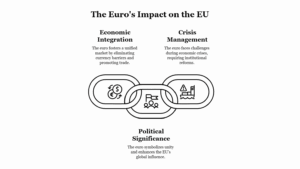Rural and urban migration is the movement of people from rural areas to urban centers in search of better opportunities, livelihoods, and quality of life. This phenomenon is influenced by various push and pull factors, including economic, social, and environmental factors. Here’s a brief overview of rural and urban migration:
Push Factors (Rural Areas):
1. Limited Economic Opportunities: Rural areas often lack diversified economic activities and employment opportunities, leading to low wages, underemployment, and poverty. Lack of access to education, skills training, and technology further limits economic prospects in rural communities.
2. Agricultural Challenges: Traditional farming practices, land fragmentation, climate change, and natural disasters can adversely affect agricultural productivity and livelihoods in rural areas. Declining profitability, land degradation, and water scarcity compel rural residents to seek alternative livelihoods in urban areas.
3. Social Factors: Rural communities may experience social challenges such as caste-based discrimination, gender inequality, lack of social services, and inadequate infrastructure. Limited access to healthcare, education, and sanitation facilities can also drive migration to urban areas in search of better living conditions.
Pull Factors (Urban Areas):
1. Employment Opportunities: Urban centers offer a diverse range of job opportunities in manufacturing, services, construction, retail, and informal sectors. Higher wages, better working conditions, and potential for career advancement attract rural migrants seeking economic betterment.
2. Education and Skills: Urban areas provide access to quality education, vocational training, and skill development programs, enhancing employability and upward mobility for rural migrants and their children. Educational institutions, training centers, and job markets in urban centers facilitate human capital development.
3. Social Infrastructure: Urban areas typically have better social infrastructure, including healthcare facilities, schools, housing, transportation, and sanitation services. Access to amenities, entertainment, cultural events, and social networks enhances quality of life and social mobility for urban residents.
Consequences of Migration:
1. Urbanization: Rural-to-urban migration contributes to urbanization, leading to population growth, expansion of urban settlements, and pressure on infrastructure and services. Rapid urbanization poses challenges related to housing, transportation, water supply, sanitation, waste management, and environmental sustainability.
2. Remittances: Rural migrants often send remittances to their families in rural areas, contributing to household income, poverty reduction, and local development. Remittances support investment in education, healthcare, housing, and entrepreneurship, fostering economic resilience in rural communities.
3. Social Integration: Rural migrants may face challenges of social integration, cultural adaptation, and identity formation in urban environments. Social exclusion, discrimination, and marginalization based on ethnicity, language, religion, or socio-economic status can affect migrants’ well-being and sense of belonging.
In conclusion, rural and urban migration is a complex phenomenon driven by a combination of economic, social, and environmental factors. Understanding the dynamics of migration is crucial for addressing the challenges and opportunities associated with rural-urban transitions and promoting inclusive and sustainable development in both rural and urban areas.







Leave a Reply